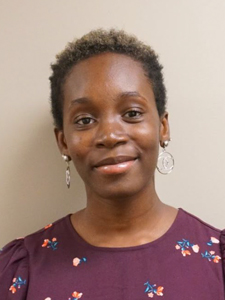 After visiting the emergency room at New York-Presbyterian Hospital for a minor illness, Olympia Paul was shocked when she received a bill for $1,619. And that was after insurance covered about half the cost.
After visiting the emergency room at New York-Presbyterian Hospital for a minor illness, Olympia Paul was shocked when she received a bill for $1,619. And that was after insurance covered about half the cost.
“I’ve never had a situation where my bill is that much,” she said.
Half of all American adults with medical debt say bills from emergency room visits caused their debt, according to the Kaiser Family Foundation.
Originally from Nigeria, Paul moved to the U.S. about six years ago to attend college in Georgia, where she was an international student and had health insurance through her university.
“Everything was pretty much paid for. I can’t even remember a copay for anything. So I never really had any bills, or if I did, nothing as high as that,” Paul said.
After college, Paul got health insurance through her new job at a financial institution in Dallas, Texas. She was in New York for a three-week orientation for new employees when she got sick.
Looking back, Paul admits it was probably the wrong decision to go to the ER, since she had a minor illness. However, the hospital didn’t tell her how much she would have to pay for the treatment. It was also the first time she used her employer-sponsored coverage.
“I was like, why is my bill so much?” Paul said.
Paul was now saddled with a bill that would take a long time to pay off. “That would be like most of my [monthly] salary, to be honest,” Paul said.
Luckily, Paul’s boyfriend happened to see a post on Twitter about Dollar For’s work to crush medical bills by making charity care known, easy and fair.
Before that, Paul didn’t know that the Affordable Care Act requires nonprofit hospitals to offer charity care programs to keep their tax-exempt status. These financial assistance programs reduce or eliminate medical bills for low-to-middle income patients.
New York City hospitals receive millions more in tax breaks than they spend on community investment, including financial assistance and subsidized healthcare services, according to a recent analysis by the Lown Institute.
Paul filled out the charity care application on the Dollar For website, which she said was “easy” and “straightforward.”
A few weeks later, she found out the bill was reduced down to $161, a 90% discount from the original.
“I was in shock. I was surprised. I thought the bill would maybe be reduced, but I didn’t think it would be reduced by that much,” Paul said.
